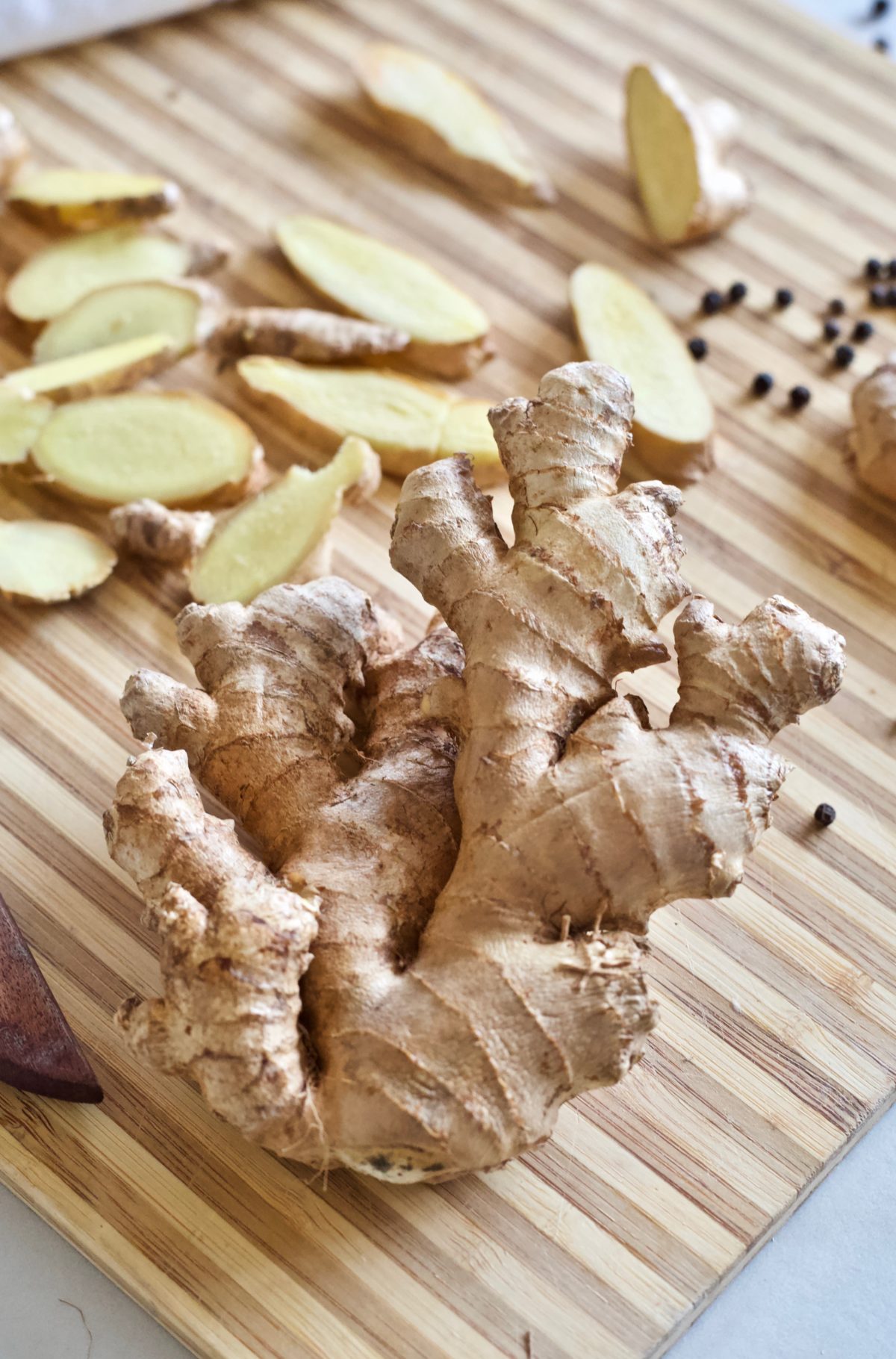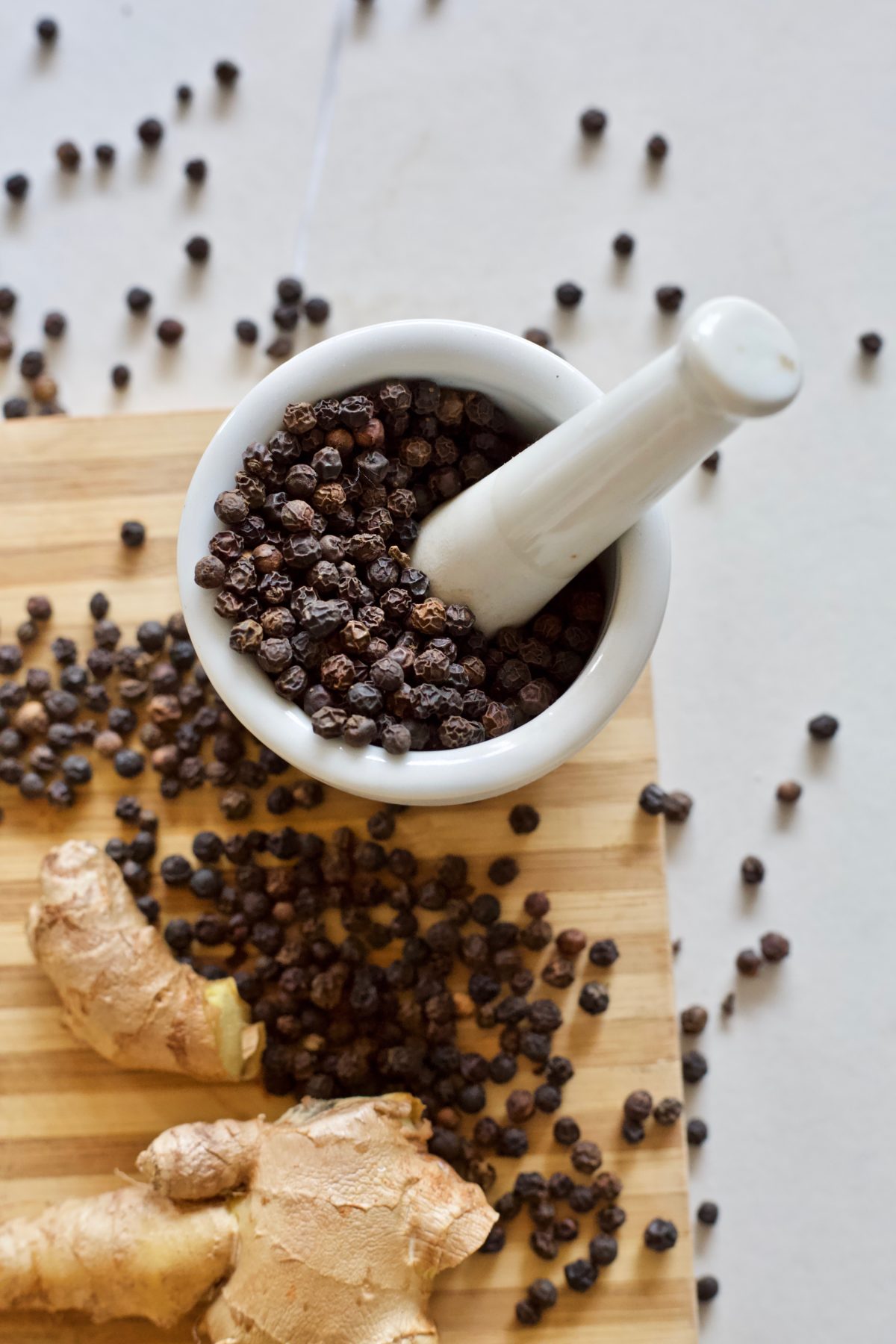
Ayurvedic Guide to Building Digestive Power
If you consult with an Ayurvedic practitioner, don’t be surprised if she asks you a hundred and one questions about the state of your digestive system—no matter what brought you into her office! Regardless of where your imbalances manifest, Ayurveda places incredible emphasis on the state of digestion, also known as agni.
According to the Ayurvedic paradigm, a digestive imbalance is considered to be the root cause of most illness (Frawley, 2000). Conversely, a strong and balanced digestive system puts you at much greater odds for attaining and maintaining optimal health. This article will explore Ayurvedic methods for supporting digestive health, and ultimately, building digestive power.
How Hot Does Your Fire Burn?
To begin, it may be helpful to outline why Ayurveda places so much emphasis on digestion. Our digestion is our processing system for almost all of our nourishment. Of course, some nourishment is received via the air, and our skin has its own absorption as well. But, as we all know, one cannot live for long without food or drink. Furthermore, though it is wonderful to have food and liquids of high-quality, if we can’t make use of that nourishment through good digestion, it does us little good. Taking this one step further, strong digestion builds healthy blood, and healthy blood is carried all throughout our bodies, giving rise to healthy organs. Thus, our gut is the first portal of nourishment and addressing the digestive system, or regulating agni, is the foundational approach to most diseases (Frawley, 2000).
The state of digestion is classified into four major categories in Ayurveda:
- mandagni (low digestive fire),
- tikshnagni (high digestive fire),
- vishmagni (variable digestive fire), and
- the elusive unicorn of Ayurveda: samagni (perfectly balanced digestion) (Frawley, 2000).
It is rare (but not impossible) to find perfect equanimity in digestion. Signs of healthy digestion include, but are not limited to:
- only a very thin coating on the tongue,
- pleasant breath and body odor,
- good energy,
- healthy circulation,
- regular daily bowel movements, and
- a healthy appetite for meals (Frawley, 2000).
It is quite common for agni (the digestive fire) to be imbalanced in one direction or another. This article will primarily explore methods for building digestive power, which is appropriate in instances of mandagni (low digestive fire), and sometimes, in cases of vishmagni (variable digestive fire).
Signs That Your Digestion Needs Building
In general, weak digestion is an expression of kapha dosha. Those with a kapha constitution are more prone to slow or sluggish digestion. However, anyone can experience mandagni. Furthermore, late winter and spring is the time of year ruled by kapha, so you may find your digestive power flagging a bit at that time of year in particular.
For vatas, the digestive power is often variable. At times, vata’s intense hunger may need calming down; at other times it can use a little agni boost. So, these guidelines may be helpful for those with variable digestion as well. Pittas, on the other hand, tend to have a very powerful and warm digestive system. A pitta digestive imbalance is characterized by intense hunger, burning indigestion, and perhaps diarrhea. Therefore, these guidelines are less suitable for pitta types or those with a pitta digestive imbalance.
If you are really perplexed about the condition of your agni, it is always wise to consult with an Ayurvedic practitioner. However, these are some general signs of low digestive fire:
- poor appetite,
- tendency to gain weight even when eating very little,
- a thick coating on the tongue,
- feeling heavy or sleepy after eating,
- foul breath and body odor,
- excess mucus and congestion, and
- frequent colds and flu (Frawley, 2000).
How You Eat Is As Important As What You Eat
There are classifications of foods and herbs that are particularly effective at building digestive power, which I will enumerate later in this article. However, before digging into the details of what goes onto your plate, it is well worth considering how you take in your food.
These are some basic guidelines for cultivating healthy eating habits. All of these guidelines are outlined in the Caraka Samhita, one of Ayurveda’s most renowned classical texts. Like many classical texts, it is a bit unclear exactly who wrote it, however, it is one of the fundamental pieces of Ayurvedic literature.
1. Eat the Proper Quantity
It is important to eat neither too little nor too much. Being undernourished will ultimately weaken all the bodily tissues and will cause any number of vata imbalances. However, eating too much will dampen the digestive fire and will likely lead to excess weight and sluggish digestion.
You may wonder how to tell when enough is enough. The Caraka Samhita leaves us a clue: “The amount of food which, without disturbing the equilibrium, gets digested as well as metabolized, in proper time, is to be regarded as the proper quantity” (Sharma & Dash, 2014, Vol I: p.106).
This may sound a bit obscure to most readers. One modern interpretation, and one that I personally use, is the 75% rule. The 75% rule states that you should not fill your belly with food and liquid beyond 75% full. Of course, there is no way to exactly measure this. It is a felt sense. However, I recommend letting the burp be your guide. If you are eating your meal slowly enough to pay attention, there will typically be a place in your meal where you have a small burp. The next time you sit down for a meal, see if you can detect the burp. If you detect it, put your fork down, and observe if you end up at a nice 75% mark — the Goldilocks principle of satiety!
Eating just the right amount of food will prevent feelings of heaviness after meals and will allow you to digest your food more efficiently, thus preserving the strength of your agni.
2. Eat in a Peaceful Setting Without Distraction
Mindfulness has become a buzzword these days, but there is a lot to be said about being aware while we are eating, especially when it comes to building digestive power. In modern times, this means unplugging from technology during meals. It also means not working while eating and engaging in only pleasant and light-hearted conversation at meal times. The Caraka Samhita takes a strong stance on this by suggesting, “One should not talk or laugh or be unmindful while taking in food” (Sharma & Dash, Vol II).
While the position described in the Caraka Samhita is rather austere, we can learn from these ancient teachings and use meals as a time to be quiet, to be reflective, and to simply enjoy the wonderful nourishment in front of us. Of course, there is something to be said for enjoying a pleasant meal with friends and family. However, as an Ayurvedic practitioner, I advise keeping conversations light-hearted, as well as steering clear of business lunches, when possible, which distract us from savoring our food.

3. Eat at a Moderate Pace
Interestingly enough, the Caraka Samhita advises not eating too fast as well as not eating too slow, this affects one’s ability to properly taste and enjoy his/her meal. (Sharma & Dash, Vol II). Furthermore, on eating too slowly is problematic, as the food will become cold and digestive irregularities may result (Sharma & Dash, Vol. II). One helpful rule of thumb is to put the fork down between bites. I find that this greatly assists in eating at a moderate pace.
4. Do Not Eat Until the Prior Meal Has Been Digested
For most, this means waiting at least three hours between meals and snacks. This is also where the concept of true hunger comes into play. Many Americans are accustomed to frequent snacking. However, from the Ayurvedic standpoint, eating too frequently dampens agni and will inhibit building digestive power. Speaking metaphorically, you want to give the fire a chance to burn its fuel before piling on more fodder. The Caraka Samhita clearly explains that eating too soon after the last meal will cause all the doshas to become aggravated, as the partially digested food will mix with the new food and cause a clogging of physical channels.
Also, the Ayurvedic standpoint here is that allowing enough time between meals stimulates the agni, helps the body clear ama (toxins), sharpens the mind, and restores the balance of the doshas (Palanisamy, 2015).
There are a number of other guidelines for healthy eating listed in the Caraka Samhita as well as contemporary Ayurvedic texts. However, the four listed above cover quite a bit of territory and are an excellent place to begin. Once you have mastered those, a couple of other guidelines are to have mostly warm and moist foods and also to take no more than a half cup of warm water with meals. Ice water, especially with meals, is contraindicated as Ayurveda teaches that it will weaken the agni.
The latter guidelines are based on an understanding of the nature of agni. Since agni is warm and fiery by nature, to boost agni and ignite that fire, it is ideal to choose foods that mimic the nature of agni. Warm and moist foods are considered to be easier to digest and to have a more encouraging effect on the agni. Thus, when building digestive power, it is wise to eat moderately, eat with awareness and gratitude, and focus on warm, moist, cooked foods (Svoboda, 2010).

Rasa For Building Digestive Power
The word rasa has many meanings in Sanskrit. One of its meanings essentially translates to taste, and more specifically, the taste of food when it first hits the tongue (Lad & Lad, 2009).
There are six main tastes according to Ayurveda:
- sweet,
- sour,
- salty,
- bitter,
- pungent, and
- astringent.
For building digestive power, the pungent, sour, and salty tastes are best (Sharma & Dash, Vol 2). This does not mean that if you are trying to increase agni you will exclusively eat these foods. However, it is wise to emphasize foods with the pungent, sour, and salty tastes with some regularity if this is your aim.
The pungent taste is especially good for increasing agni short-term, whereas the sour taste is best for increasing agni long-term. The salty taste is helpful for stimulating appetite — giving food good flavor, and like the pungent and sour tastes, it has a warming energy, which inherently stimulates agni.
Examples of the pungent taste include chile, onion, mustard, radish, and garlic. The pungent taste is excellent for stimulating agni and for burning up excess kapha, which may manifest in the form of mucus, watery secretions, or a thick tongue coating. Kapha types may use the pungent taste liberally, vatas are best off taking it in small doses, and pittas should minimize hot, spicy food as it is intensely aggravating to pitta dosha (Morningstar, 1995).
The sour taste is found in foods such as vinegar, yogurt, cheese, citrus, and pickles. This taste stimulates salivation, as well as the agni, which is why it is helpful to have a small amount of pickles or chutney along with your meals. However, just like the pungent taste, too much of the sour taste will aggravate pitta and may cause a mild inflammation of the gut (Morningstar, 1995). However, if your digestive power is weak, you can likely benefit from a bit more of the sour taste. Keep in mind that, small amounts frequently taken with meals are better than consuming large amounts of vinegar and pickles at once.
The salty taste is found in rock salt and sea salt, as well as sea vegetables (Morningstar, 1995). Again, it is wise to not eat huge amounts of the salty taste, but if you are looking to boost agni, having a bit of salt with your meals on a regular basis will stimulate the digestive fire. Another interesting fact about salt is that it is quite grounding, and thus beneficial for vata dosha (Morningstar, 1995).
There is one more aspect of working with taste, agni, and the doshas, that is important to understand. Though the pungent, sour, and salty tastes have an overall stimulating effect on agni, one must always consider individual constitution. For example, if someone has low digestive fire and also a very strong kapha constitution, the pungent taste may be suggested in liberal amounts. However, it would be unwise to recommend that this person take in large amounts of the salty and sour tastes, as those tastes drastically increase kapha dosha. As always in Ayurveda, protocols are tailored to the individual. In this instance, the pungent taste would be recommended along with plenty of bitter and astringent foods, as the pungent, bitter, and astringent tastes all pacify kapha dosha.
Conversely, someone of a vata constitution who has weak agni would benefit from ample amounts of the sweet and sour tastes, and smaller amounts of the pungent taste. The salty and sour tastes pacify vata with their warm, moist, and heavy nature. Too much hot, spicy food is overly drying and stimulating for vata dosha, and would thus be recommended in smaller amounts. For pitta dosha, the aim is generally to cool the digestive fires, so the sweet, bitter, and astringent tastes are best.
Spices To Light Your Digestive Fire
Finally, spices are crucial when building digestive power. While the list of beneficial spices is long, here are a few ideas to get you inspired.

Ginger (Zingiber officinale)
Ginger is one of the most versatile and potent digestive spices. For my vata clients, I recommend fresh ginger tea. For kapha clients, dry ginger is best. This can be taken as a tea, in cooking, and even in capsule form. Ginger has a pungent and sweet taste, a heating energy, and depending on whether it is fresh or dried, either a nourishing or purifying effect on the body. (The fresh root is nourishing, whereas the dried root is purifying (Dass, 2013).) One easy way to take fresh ginger as a digestive is to make thin slices of the root, squeeze a bit of lemon or lime on top, add a pinch of salt, and simply chew before meals. This is a sure way to give the agni a little head start at mealtime.
Fennel (Foeniculum vulgare)
Fennel is special in that it stimulates agni without aggravating pitta dosha. People of a pitta nature generally have an inherently robust digestion, but even pittas can use an agni boost from time to time. Fennel is the perfect choice. Fennel has a sweet and slightly pungent taste, a cool energy, and an overall nourishing effect on the body (Dass, 2013).
Since it is sweet and nourishing, fennel is also an excellent choice for those of vata constitution (Dass, 2013). Dried and powdered fennel makes a lovely tea. Also, chewing on a few dry roasted fennel seeds after meals is a wonderful way to take in this pleasant and effective digestive spice.

Black Pepper (Piper nigrum)
If you are looking for a heavy hitter, black pepper is a great choice. Black pepper is ideal for kapha dosha and those with a particularly sluggish digestion. This is because black pepper has a pungent taste, a heating energy, and a purifying effect on the body (Dass, 2013). These spicy little peppercorns are excellent for stimulating agni and helping the body to burn up ama (metabolic wastes and/or undigested food matter). Adding ground black pepper to your veggie curries and soups is an easy way to weave a little Piper nigrum into your daily meals. Also, black pepper is part of the potent digestive trifecta known as Trikatu, which consists of equal parts dry ginger, black pepper, and pippali (Piper longum). Trikatu is one of the premier herb blends used in Ayurveda for boosting agni.
If you are building digestive power, you may use spices generously in cooking. However, it is helpful to be aware of the energetics of the spices and how they affect your dosha so you can make the best choices. Some other excellent digestive spices include cinnamon (Cinnamomum verum), cumin (Cuminum cyminum), coriander (Coriandrum sativum), and fenugreek (Trigonella foenum-graecum).
Taking It All In
If building digestive power is your aim, it is wise to consider how you eat, what you eat, and the appropriate use of spices and seasonings. Ayurveda is not one-size-fits-all, so there are general guidelines that we can all follow for strengthening agni. Yet, one must always consider the constitution of the individual and tailor food choices and spices that are balancing and harmonizing.
On the whole, the pungent, sour, and salty tastes are best for stimulating agni, as well as foods that are warm, moist, and light. Also, we can all benefit from greater mindfulness around our eating. So, a great place to start for everyone is with the guidelines for healthy eating outlined in this article, remembering that how you eat is as important as what you eat.

REFERENCES
Dash, B. & Sharma, R.K. (2014). Caraka Samhita (Vols. 1 & 2). Varanasi, India: Chowkhamba Sanskrit Series Office.
Dass, V. (2013). Ayurvedic herbology. Twin Lakes, WI: Lotus Press.
Frawley, D. (2000). Ayurvedic healing. Twin Lakes, WI: Lotus Press.
Lad, U. & Lad, V. (2009). Ayurvedic cooking for self-healing. Albuquerque, NM: The Ayurvedic Press.
Svoboda, R. (1999). Prakriti: your ayurvedic constitution. Twin Lakes, WI: Lotus Press.
Morningstar, A. (1995). Ayurvedic cooking for westerners. Twin Lakes, WI: Lotus Press.







